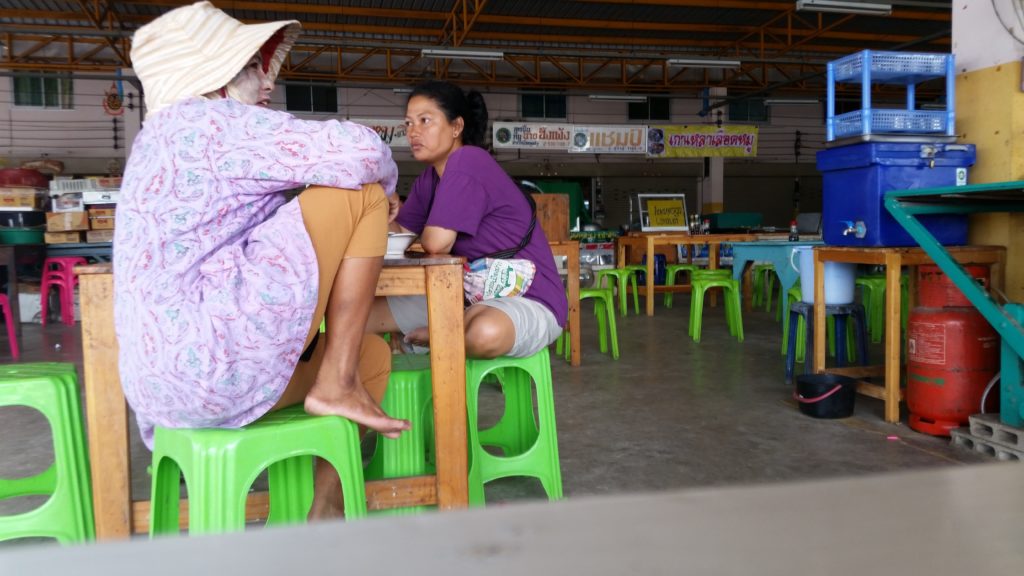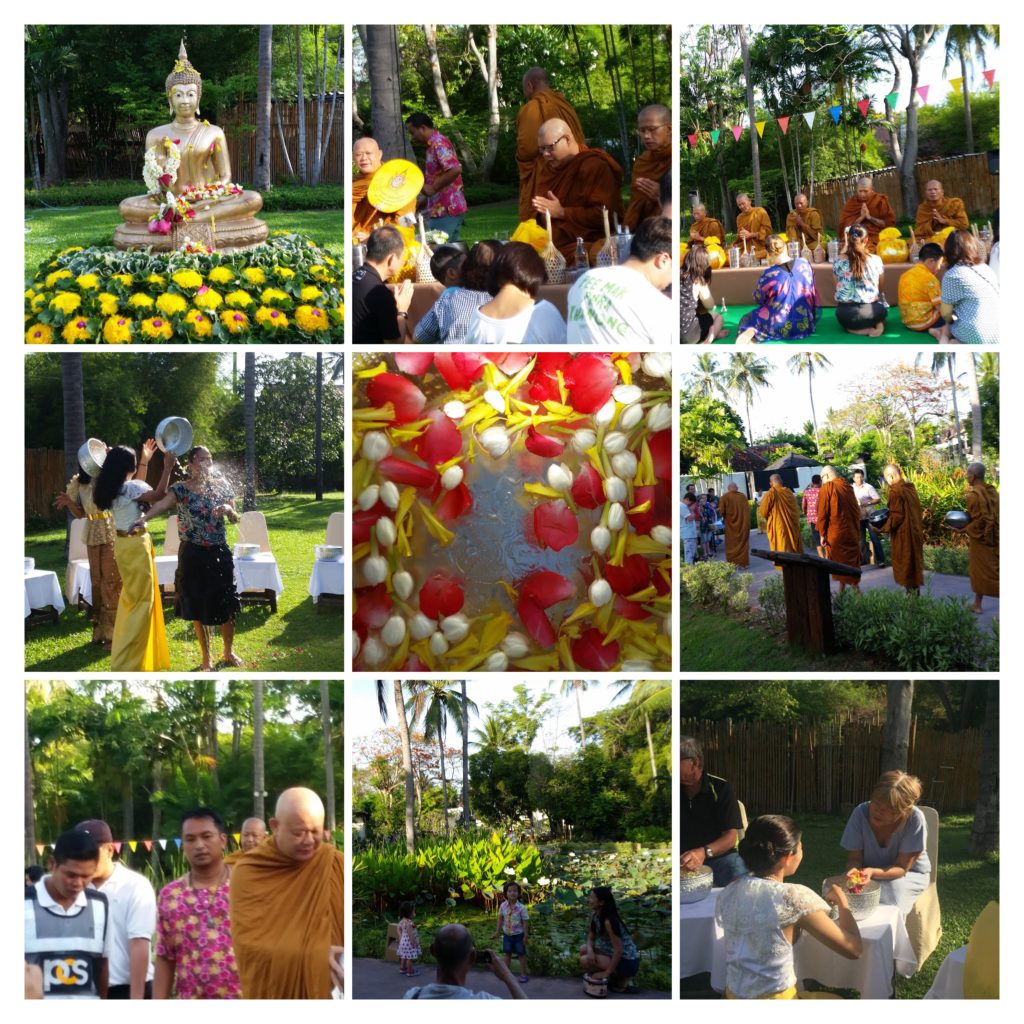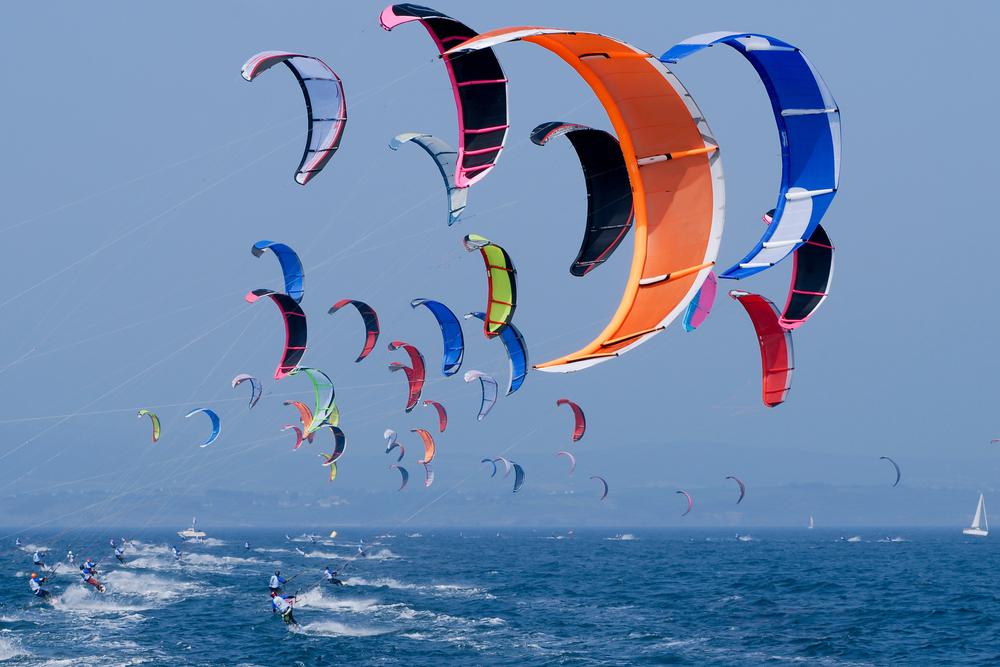
I have many taste memories from Pak Nam Pran, a beautiful and relaxed town by the ocean a few hours south of Thailand.
There is one dish that I will remember more vividly than the others.
It’s called jok (pronounced joke) and is the Thai version of congee, which is rice porridge or gruel, served with additional ingredients such as meat, fish and seasonings.
It’s not the best food that I’ve ever eaten.
But it’s the conditions around how morning jok is created and eaten that makes the dish unique and memorable. I compare it to terroir and how the environmental conditions where grapes are grown creates the unique characteristics of wine.
I cycled into the town of Pak Nam Pran one morning so I could visit the farmers market and try the jok there, which many locals say they love, and is eaten in the morning for breakfast.
Most Asian countries have their version of congee, their “chicken soup for the soul”. In Japan it’s called kayu and often eaten when you are ill. Some swear by congee as their hangover cure.
I went to the food cart serving jok in a covered building that looks like a big warehouse with tables and colourful low plastic stools.
A woman and a young girl, probably her daughter, were serving up jok to diners who were often taking it away in plastic bags that are tied up very tightly with rubber bands so there is no leakage when traveling by scooter, the common mode of transportation here, back to their homes and places of work.
The girl looked at me and pointed to the bowl. She spoke in Thai and I knew what she meant even though I don’t understand Thai. There is a universal language when it comes to food.
I nodded my head and said “yes, I’m eating here.”
Her mother reached into the large hot vat of jok with a big spoon ladle and placed it in the bowl. She held up an egg and I said yes to that. When done, she sprinkled some fresh herbs on top and crispy bits.
Condiments are often on the table to finish your noodles or jok to your taste. Most of the time there are fresh chilies in vinegar, sugar, dried chilies, and a fish or soy sauce. In this way, Thais become masters in adjusting the taste of their dish to their preference. I love that.
After handing over 40 Thai baht ($1.60 CDN/$1.16 USD), the girl gave me the large bowl filled to the brim with jok. I sat at an empty table on one of the child-like plastic stools watching the morning crowd.
I observed people around me gathered with friends and family, eating their morning jok or noodles, drinking coffee, catching up as they would do at any place back home, except back home the jok and noodles are replaced with oatmeal, muffins and bagels.
There was an elderly woman in front of me speaking to her friend. She was barefoot, crouched on a small plastic stool. She wore a big hat and there was white cream smeared all over her face. I thought it was some sort of religious or cultural tradition.
I asked my friend about it. She said it’s to block out the sun.
Here the sun is not as admired as it is back home where us sun worshipers, me included, go outside on a sunny day with little on so we can absorb the rays on our bodies that crave it, especially after a long cold winter. In most Asian countries, people avoid the sun so they don’t look like labourers and women in particular don’t want wrinkles and blemishes caused by the sun.
Therefore, many Asians go to long lengths to cover up their skin from the sun, wearing hats and visors, covering their faces with masks, using parasols, smearing sun block on their bodies, and apparently white paste on their faces. Even their swim suits ensure maximum protection with often high necks, long sleeves, and built-in skirts on top of the swimwear itself so they look more like vintage bloomers than modern swim wear.
And there is a big industry that is ready to support this fear of the sun and getting tanned, from creams, sprays and gels to face whitening surgery, special drinks and recommended pills.
Interesting that while one part of the world is trying to get tanned and darker, the other side is trying to get whiter, and how the sun becomes related to class in Asia.
Back home we often think that people that can go on tropical vacations and lie in the sun on the beach or at a pool are lucky and richer. Most Thais come to the beach only when the sun starts to set and prefer pool areas that are covered and away from the sun.
I finished my jok and left. I noticed that every where I went that morning it seemed that locals were eating jok.
Locals lined up for jok from street vendors or ate at make-shift tables and chairs set up by vendors so they can eat and run. Families of many generations were outside their homes eating jok, parents were sitting by the ocean with their children eating jok, and workers at construction sites were eating jok together on their break.
Back home, we often have hot oatmeal at breakfast on a cold winter day to warm and comfort us. Here the morning comfort food is served warm and steamy and the weather matches it. I was sweating profusely as I was eating it in the usual high heat. The weather doesn’t seem to change much here.
I have come to understand through my travels and in particular in Pak Nam Pran that food is more than food, and jok is more than jok.
Jok is culture, tradition, and a way of local life. More important, it speaks to the important role of food to nourish, comfort and bring people together.
This is why jok is a taste memory and one of the things I will remember when I think about my time in Pak Nam Pran.
Also published on Medium.






0 Comments